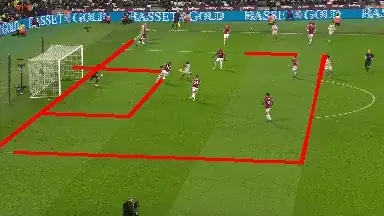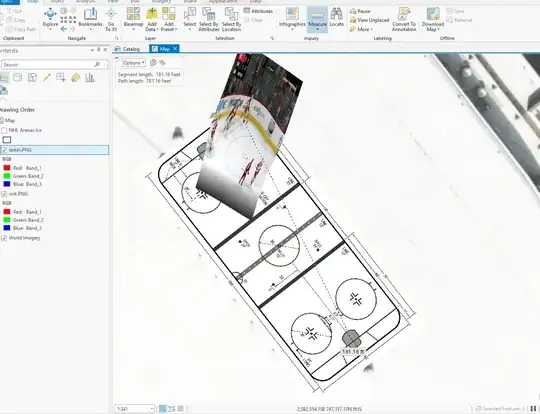I am trying to obtain an Homography of a soccer image shot by a broadcasting camera. The original picture:
I then proceed to find field lines, resulting in the following:
From what I understand, at least 4 points need to be detected. From the detected line, I should easily obtain 4 points by intersection of the lines. (I will extend the detected lines so they actually intersect)
The detected points can then be projected to another image. Since I do not have another image, I believe I should use a field model, like the one below.
Since field dimensions are known, every intersection point of the field model in world coordinates are known. For example: the middle of the field can be set to (0,0) (in meters). The top right of the field will then be (52.5,34) (in meters).
Now how do I set those world coordinates on the image?



